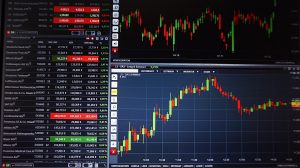Navigating the Current Gold Market: Trends, Risks, and Opportunities
Introduction:
Gold has been a store of value for thousands of years and has always been viewed as a safe haven investment. However, the recent global economic turmoil caused by the COVID-19 pandemic has created a highly volatile gold market. In this article, we’ll explore the current trends, risks, and opportunities in the gold market and provide guidance on how to navigate them successfully.
Trends:
The gold market has seen a significant uptrend in recent years, with prices reaching all-time highs in August 2020. This has been driven by several factors, including global uncertainty and inflation fears. The low-interest-rate environment has also made gold a more attractive investment as it does not generate income like other assets.
However, the gold market has been experiencing a correction in the first half of 2021. This is partly due to the increase in US Treasury yields, which makes government bonds a more attractive investment compared to gold. In addition, the recent strength of the US dollar has also put pressure on the gold market as it makes gold more expensive for buyers using other currencies.
Risks:
One of the biggest risks in the gold market is volatility. Gold prices can fluctuate significantly in response to global events and changes in economic conditions. Investors who are not prepared to handle this volatility may panic and sell their gold holdings, leading to a further drop in prices.
Another risk is the potential for government regulations or restrictions on gold ownership and trading. Governments can impose taxes, tariffs, or other barriers to limit gold trading or restrict ownership to protect their economies.
Opportunities:
Despite the risks, there are still several opportunities in the gold market. One of the most significant opportunities is the potential for hedging against inflation. Gold is known as a hedge against inflation, as its value typically increases during times of high inflation. As inflation fears increase due to government spending and low-interest-rate policies, gold may become an even more attractive investment.
Another opportunity is to invest in gold mining companies. These companies can provide exposure to the gold market while also providing potential dividend income. However, investing in mining companies does come with risks, including the risk of mining accidents and operational disruptions.
In addition to the trends, risks, and opportunities mentioned above, there are several other factors that can impact the gold market. Here are some additional points to consider when navigating the current gold market:
- Geopolitical tensions: Gold is often viewed as a safe haven investment during times of geopolitical tensions, such as wars or political instability. Any escalation in these tensions can cause a surge in demand for gold, leading to an increase in prices.
- Interest rates: The Federal Reserve’s decisions regarding interest rates can have a significant impact on the gold market. When interest rates are low, gold becomes a more attractive investment as it doesn’t generate income like other assets. However, when interest rates rise, gold may become less attractive as investors may shift their focus towards income-generating assets.
- Demand from emerging markets: Emerging markets such as China and India are major consumers of gold. Any changes in demand from these markets can have a significant impact on the gold market. For example, when China’s economy slowed down in 2015, it led to a decrease in demand for gold and caused prices to fall.
- Supply and demand: As with any commodity, the laws of supply and demand apply to gold. If there is an increase in supply or a decrease in demand, prices will fall. Conversely, if there is a decrease in supply or an increase in demand, prices will rise.
- Technological advances: With technological advancements, it has become easier and more cost-effective to mine gold. This can lead to an increase in supply, which can put downward pressure on prices.
When navigating the current gold market, it’s important to keep these factors in mind and stay informed about any developments that could impact the market. In addition, it’s important to remember that gold is just one component of a well-diversified investment portfolio. While gold can provide a hedge against inflation and economic uncertainty, it should not be relied upon as the sole investment.
Finally, investors should also consider the form in which they hold their gold. Physical gold, such as bars or coins, can be costly to store and transport. Gold ETFs or other paper gold products can provide exposure to the gold market without the physical storage requirements. However, these products come with their own risks and fees, and investors should carefully consider these factors before investing.
In conclusion
the current gold market presents both risks and opportunities for investors. By carefully considering the trends, risks, and opportunities, investors can make informed decisions and navigate the market successfully. However, it’s important to remember that gold is just one part of a well-diversified investment portfolio, and investors should consider their individual investment goals and risk tolerance before investing.


